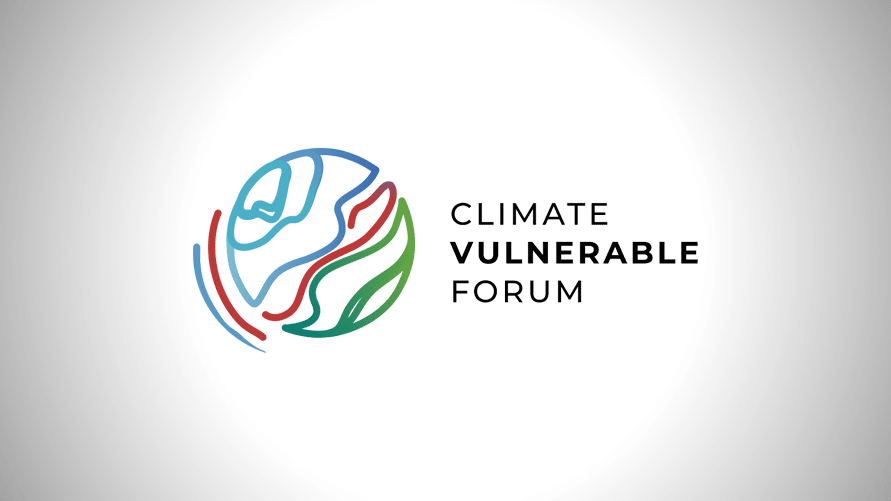Climate Glossary – Acronyms to know
- CVF – The Climate Vulnerable Forum. South-South cooperation platform for 58 member nations highly vulnerable to climate change to act together to deal with this historic global challenge across all world regions.
- UNFCCC – United Nations Framework Convention on Climate Change. This is the UN treaty established to coordinate the global response to the threat of climate change.
- CMA – Conference of Parties serving as Meeting of Parties to the Paris Agreement. This is the meeting of the governing body of the Paris Agreement.
- COP – Conference of Parties. These yearly conferences are where key climate negotiations take place.
- SB – Subsidiary Bodies. The SBs meet twice a year: during the Bonn Climate Change Conference and COP. They discuss and negotiate various aspects of climate change mitigation, adaptation, finance, capacity-building, and technology transfer.
- MWP – Sharm El-Sheik Mitigation Ambition and Implementation Work Program. This work program finalised in COP27 seeks to urgently scale up mitigation ambition and implementation in this critical decade.
- GST – Global Stocktake. This is a process for taking stock of the implementation of the Paris Agreement with the aim to assess the world’s collective progress towards achieving the purpose of the agreement and its long-term goals (Article 14).
- TED – Technical Expert Dialogue. These provide a platform for experts to exchange knowledge and share best practices on specific topics related to climate change.
- TD – Technical Dialogue. This is a conversation among Parties, experts, and Non-Party Stakeholders.
- NCQG – New Collective Quantified Goal on Climate Finance. This is the new climate finance goal to replace the $100 billion a year commitment to developing countries in 2025.
- CBDR-RC – Common but Differentiated Responsibilities and Respective Capabilities. This is a principle within the UNFCCC that acknowledges the different capabilities and differing responsibilities of individual countries in addressing climate change.
- NDC – Nationally Determined Contributions. These are countries’ self-defined national climate pledges under the Paris Agreement, detailing what they will do to help meet the global goal to pursue 1.5°C, adapt to climate impacts and ensure sufficient finance to support these efforts.
- NAP – National Adaptation Plans. This enables Parties to formulate and implement NAPs as a means of identifying medium- and long-term adaptation needs and developing and implementing strategies and programmes to address those needs.
- GGA – Global Goal on Adaptation. This was established under the Paris Agreement to enhance climate change adaptation by increasing awareness of and funding towards countries’ adaptation needs in the context of the 1.5/2°C goal of the PA.
- Glasgow-Sharm el-Sheikh (GlaSS) Work Programme. At COP26, Parties established the GlaSS work program on the GGA to define the key elements of the goal, including the methodologies, indicators, metrics, and data sources to support the assessment of overall adaptation progress.
- JTWP – Just Transition Work Programme. At COP27, the Sharm el-Sheikh Implementation Plan was adopted at CMA 4 establishing the work programme for discussion of pathways towards achieving the goals of the Paris Agreement outlined in Article 2.1 in the context of Article 2.2.
- TC – Transitional Committee. A TC on the operationalization of the new funding arrangements and fund was established, to make recommendations for consideration and adoption by COP 28 and CMA 5
Party Groupings
- EU – European Union. Represents 27 members and chaired by Sweden this year.
- G77 and China. Biggest coalition of 134 developing countries chaired by Cuba this year, designed to promote its members’ collective economic interests and create an enhanced joint negotiating capacity in the UN.
- EIG – Environmental Integrity Group. Comprises Mexico, Liechtenstein, Monaco, the Republic of Korea, Switzerland, and Georgia.
- AGN – The African Group of Negotiators. Alliance of 54 African member states that represents the interests of the region in the international climate change negotiations, with a common and unified voice.
- AOSIS – Alliance of Small Island States. Coalition of 44 small island and low-lying coastal states, along with five observers.
- AILAC – The Independent Alliance of Latin America and the Caribbean. Group of eight countries that share interests and positions on climate change.
- LDCs – Least Developed Countries. 46 nations that are especially vulnerable to climate change but have done the least to cause the problem.
- LMDCs – Like-Minded Developing Countries. Group of developing countries who organise themselves as a block negotiator in international organisations such as the United Nations and the World Trade Organization.
- The Arab Group – Composed of 22-member states.
- The BASIC Group – Four newly industrialised countries namely, Brazil, South Africa, China, and India.
- ALBA – The Coalition for Rainforest Nations and the Bolivarian Alliance for the Peoples of our America.
- The Umbrella Group is a coalition of Parties made up of Australia, Canada, Iceland, Israel, Japan, New Zealand, Kazakhstan, Norway, Ukraine and the United States.
- ABU – Comprises of Argentina, Brazil, and Uruguay

